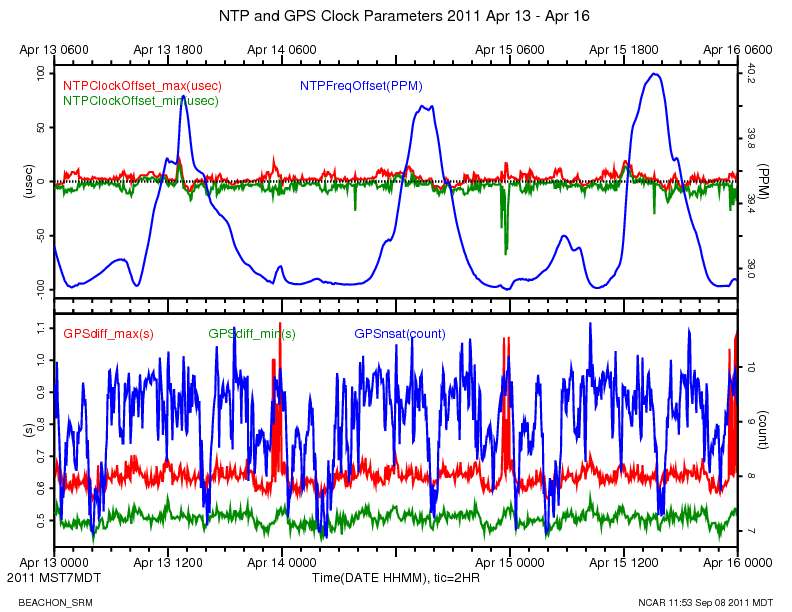...
The NTPClockOffset_max ranges from approximately -1000 to 50000 microseconds during that period. The upward spikes in NTPClockOffset_max are simultaneous with positive jumps in GPSdiff_max, up to as much as 2.5 seconds. These jumps in GPSdiff_max also seem to happen when the number of received satellites changes, indicating that internal processing lags in the 25-HVS cause it to report late. It is unknown if the PPS signal is effected by these events. At these moments, NTP estimates that the system clock is early relative to the GPS, and starts to correct for the error by speeding up the system clock, seen as the positive spike in NTPClockOffset and NTPFreqOffset. When the GPS recovers from its delayed reporting, then NTP sees that the system clock has gotten ahead of the GPS, reports a negative NTPClockOffset and starts gradually returns to slow the system clockprevious frequency offset.
After installing 18x-LVC, the NTPClockOffset is in a much smaller range, from -10 to 25 microseconds:
GPSdiff is also much better behaved, ranging from a minimum of 0.5 to 1.1 seconds. The number of satellites tracked by the new GPS is also generally higher.
